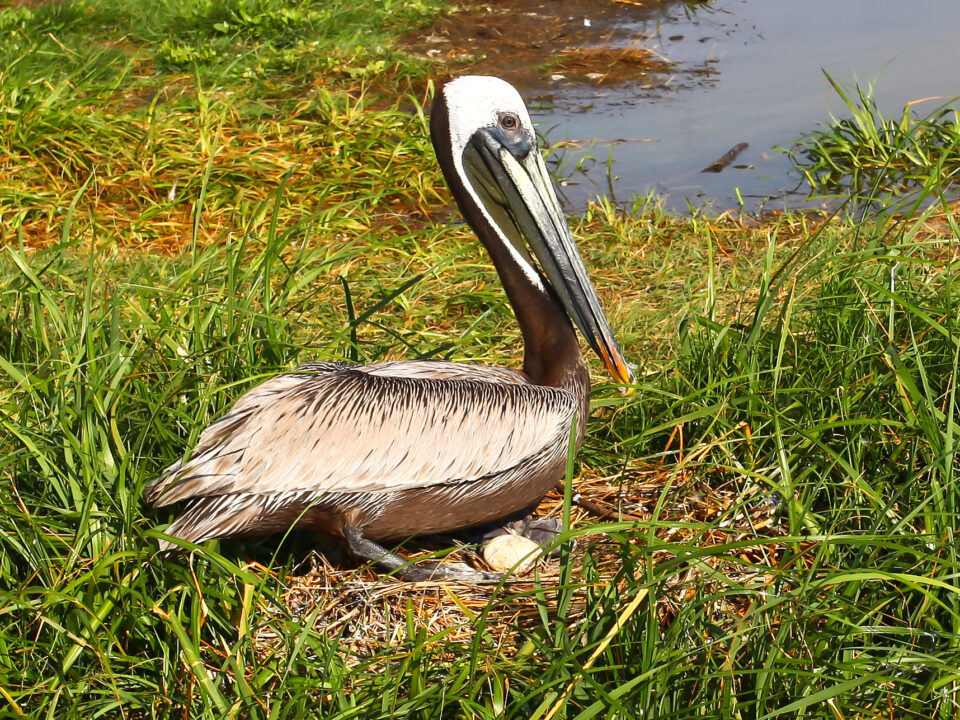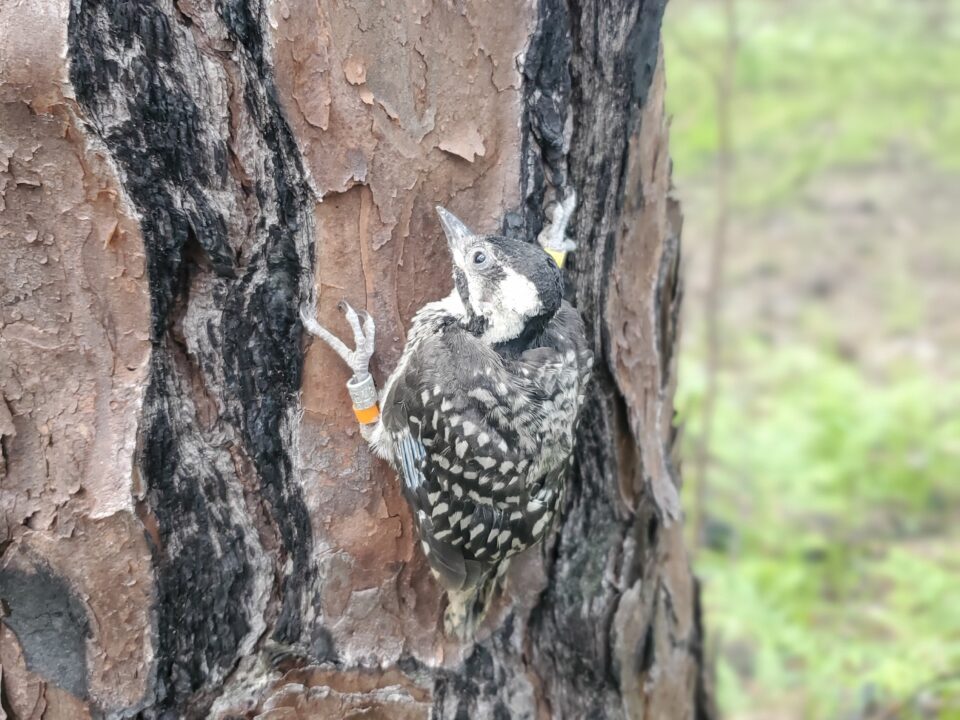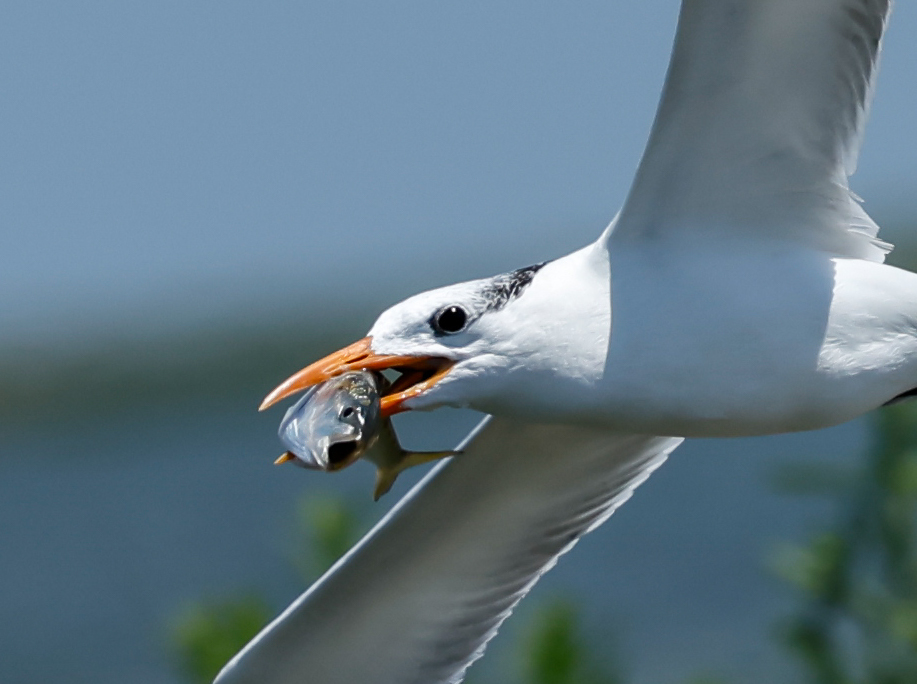2010 whimbrel watch
Azalea Returns to Catfish Ponds – Again!
May 12, 2010Camellia on Branch May 15
May 15, 2010
Written by Bryan Watts and Fletcher Smith
May 12, 2010
One of the great spectacles of spring along the Delmarva Peninsula is the parade of whimbrel flocks leaving on their flight to arctic breeding grounds. Flocks begin to depart during a 3 to 4-hour window before dusk. The event begins with rallying calls as birds rise up from the marsh and begin to swirl upward and assemble in V-formation. For many of these birds, this is the last time they will touch the earth until they settle down on their breeding grounds several hundred or more miles to the north. It is exciting to watch these birds take off on the last leg of migration.
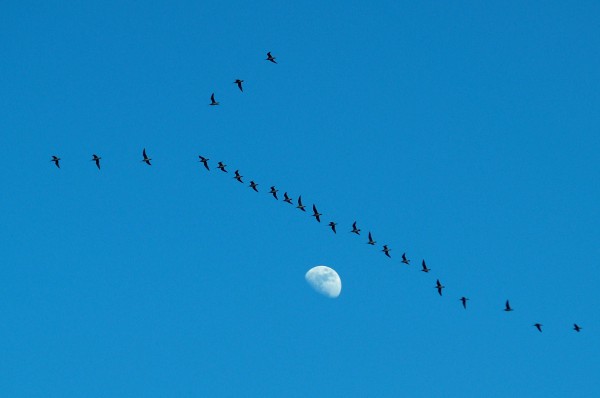
Flock of whimbrel flying over Boxtree Creek, Virginia’s Eastern Shore, heading north to breeding grounds Photo by Alex Lamoreaux.
In the spring of 2009, the Center for Conservation Biology (CCB) and The Nature Conservancy initiated a watch program to count whimbrels leaving our primary study area on the seaside of the Delmarva Peninsula. Birds are counted in flocks as they fly north during the last 2 weeks of May. All birds appear to leave during the 4 hours before dusk. The objective of this effort is to understand the phenology of leaving for birds staging along the Delmarva Peninsula and to make comparisons with birds moving through locations to the north and arriving on breeding grounds. During the 2010 spring season, the Toronto Ornithological Club organized a similar effort in strategic areas around the Great Lakes.

Temporal pattern of leaving dates for whimbrel moving over the Boxtree Study Site shows that more than 70% of birds left between 23 and 25 of May, 2010. Graph by the Center for Conservation Biology.
During the 2010 Whimbrel Watch, 156 flocks of whimbrels including 6,467 individuals were recorded as they flew over the study area moving north. Flock size averaged 41 birds but ranged as high as 240. Greater than 70% of birds left during three nights from 23 to 25 May.
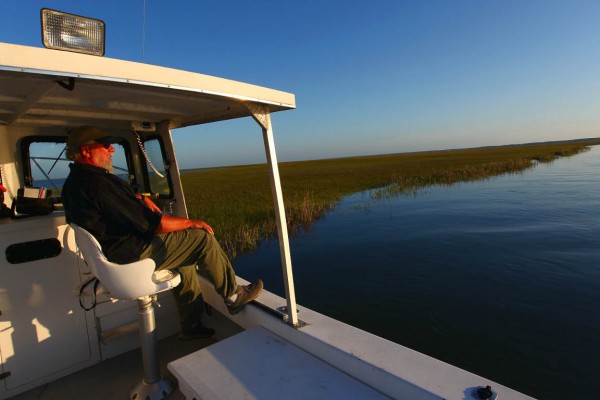
Barry Truitt on the TNC privateer near Elkins Marsh watching for whimbrel. Map by Bryan Watts.
The Whimbrel Watch project is part of an ongoing, integrated research program designed to investigate a wide range of migration questions focused on migration routes, stopover areas, and stopover ecology. Satellite transmitters have been used to delineate migration routes, link breeding and winter areas, and to identify important staging areas. Conventional transmitters have been used to examine stopover duration along the Delmarva Peninsula.
Project sponsored by the Center for Conservation Biology (CCB), The Nature Conservancy (TNC), the U.S. Fish & Wildlife Service (FWS), Virginia Coastal Zone Management Program (CZM), the Toronto and Region Conservation Authority (TRCA), Toronto Ornithological Club (TOC) and Willow Beach Field Naturalists.

